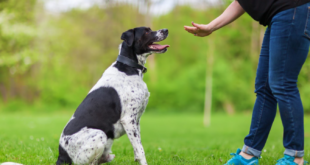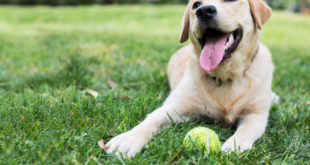Welcome to the world of puppy parenthood, where cuddles and cuteness are coupled with sharp teeth and playful bites. As you step into the world of training your new four-legged companion, leash woes can become a common issue that new pet owners struggle with. From bites to tugs to out-of-control playfulness, leash troubles can quickly become a headache for novice trainers. But fear not- with some patience, a bit of training, and proper tools, you can easily tame your puppy’s biting tendencies and turn walks into a joyous bonding experience for you and your furry friend. In this article, we will dive into the world of leash training and provide practical tips to help you combat your puppy’s leash woes.
Table of Contents
1. The Bite is Worse than the Bark: Dealing with a Mischievous Pup
Mischievous puppies can be a handful to deal with, but with patience and the right techniques, you can train them to be well-behaved dogs. Here are some tips to manage a pup that loves to chew, dig and bark excessively:
– Teach your pup basic commands like “sit,” “stay,” “drop it” and “quiet.” Consistency is key here, so make sure to use the same words and tone of voice every time.
– Puppy-proof your home by keeping valuables out of reach, patching up or covering any holes in the fence and providing plenty of chew toys to redirect their biting tendencies.
– Over-excitement can lead to bad behavior, so make sure to provide your pup with enough exercise and mental stimulation. Consider taking them for daily walks, playing fetch or practicing agility exercises in the backyard.
Remember, training a pup takes time and effort, but in the end, it’s worth it to have a well-behaved and happy furry friend.
2. A Tangled Leash of Trouble: The Struggle of Walking a Biting Puppy
Walking a puppy is supposed to be a fun activity, but when you have a biting puppy, it can be a real nightmare. Not only do you have to worry about the puppy causing injury to you or others, but the tangled leash only complicates matters.
One of the biggest struggles when walking a biting puppy is keeping the leash from getting tangled. A tangled leash can cause frustration, as you find yourself stopping and starting repeatedly to untangle it. This can also give your puppy more opportunities to bite at you or other animals, as they can take advantage of your distraction.
- To avoid a tangled leash, try these tips:
- Invest in a shorter leash
- Teach your puppy to walk on your left side
- Practice walking in a straight line
- Avoid letting your puppy go behind you
Remember, proper training is key when it comes to walking a biting puppy. If your puppy persistently bites or shows aggression, seek the help of a professional trainer or behaviorist.
3. From Playful to Painful: Understanding Why Puppies Bite
Puppies are undeniably adorable, but their penchant for biting can quickly turn a playful interaction into a painful one. It’s important to understand why puppies bite and how to redirect this behavior to prevent injury.
One reason for biting is simply playfulness. Puppies use their mouths to explore their environment and interact with the world around them. They also use biting as a form of play with other dogs and humans alike. However, puppies may not yet have learned the boundaries of acceptable play, and may not understand that their sharp teeth can cause pain.
Additionally, biting can be a form of communication for puppies. If a puppy is feeling scared or overwhelmed, they may lash out with a bite as a way of communicating their discomfort. It’s important to recognize the signs of stress in a puppy, such as cowering or growling, and remove them from the situation before biting occurs. With patience and training, puppies can learn appropriate ways to communicate and play without resorting to biting.
4. Leash Woes: Taming Your Puppy’s Bite in 5 Easy Steps
If your puppy is biting the leash during walks, it can be frustrating and even dangerous. Here are five easy steps to help you tame your puppy’s bite and enjoy your walks with ease.
1. Teach the “Leave It” command: Start by teaching your puppy the “leave it” command. When your pup bites the leash, say “leave it” and offer a treat. Repeat the command until your puppy learns to stop biting on command.
2. Use a Chew Toy: Another way to redirect your puppy’s biting is by introducing a chew toy. Give your puppy a chew toy while on a walk to chew on instead of the leash. This will not only help prevent leash biting but can also help satisfy their urge to chew.
3. Switch to a Different Leash: If your puppy seems determined to chew through the leash, consider switching to a different type of leash. Try a thicker, more durable leash made of a different material, like nylon or leather.
4. Use Positive Reinforcement: Be sure to reward your puppy when they successfully walk without biting the leash. Use treats, praise, and even a toy to encourage good behavior.
5. Consistency is Key: Remember, consistency is key. Be patient and consistent in your training efforts, and before long, your puppy will learn not to bite the leash. With consistent training and positive reinforcement, you can enjoy walks with your pup without worrying about them biting or chewing on the leash.
5. The Leash to Success: How to Enjoy a Peaceful Walk with Your Pup
Walking your furry friend is one of the most joyful and rewarding experiences, but it can sometimes turn out to be a real challenge. If your pup pulls, jumps, or barks during your walks, it’s time to learn some leash training tips to turn your walks into peaceful and enjoyable moments for both you and your pet.
The first rule of successful leash training is to keep your dog calm, focused, and under control. You can achieve this by using treats, positive reinforcement, and a calm, firm voice to redirect your pet’s attention back to you. Always praise your dog when they walk next to you calmly and avoid punishing or scolding them when they misbehave, as this can only increase their anxiety and reactivity.
Another key aspect of a successful walk with your pup is to find the right type of leash that fits your dog’s needs and personality. There are various types of leashes, including retractable, standard, and no-pull ones, each of which serves different purposes and benefits. Experiment with different options and see what works best for your pet’s size, breed, and behavior. Keep in mind that the leash should be comfortable for your dog and secure enough to prevent them from escaping or causing harm to others around them.
Armed with a few tips and some patience, you’re now well on your way to keeping your puppy’s bites in check. With a little practice, you’ll find that your puppy’s leash woes will soon be a thing of the past.
 Treat For Dog – Brain Training for Dogs, Dog Training & Obedience Discover Treat For Dog and get your pup on the path to smarter, happier, and healthier living with brain training for dogs.
Treat For Dog – Brain Training for Dogs, Dog Training & Obedience Discover Treat For Dog and get your pup on the path to smarter, happier, and healthier living with brain training for dogs.




